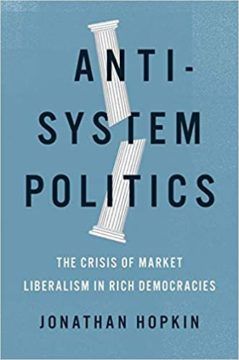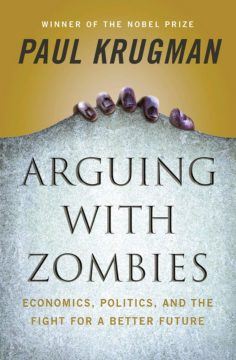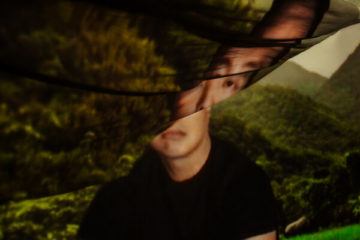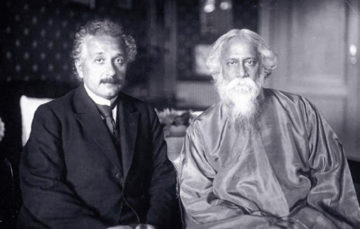 Robert Kuttner in the New York Review of Books:
Robert Kuttner in the New York Review of Books:
Ever since the early twentieth century, advocates of taming capitalism in the public interest have assumed that energized citizens and activist government could counter the power of concentrated wealth. The Progressive Era, in which legislation was enacted to constrain the robber barons of the time, was cut short by World War I. But after World War II a combination of government regulation, direct public investment, progressive taxation, social insurance, and a vigorous labor movement led to broad prosperity. America’s citizenry reciprocated with a trust in democratic government.
In recent decades, that virtuous circle has turned vicious. Rapacious capitalism has resurged, and with it inequality and insecurity. Government has not only been unable to counter these trends; partisan blockage has undermined even basic tasks of governing such as assuring the integrity of elections. Not surprisingly, government has lost public confidence.
Roadblocks to activist government in the US were designed by the nation’s founders, who equated protection of the rights of the people with limited government. They built into their Constitution all manner of checks and balances as obstacles to legislation, and the Supreme Court, beginning in 1803 with Marbury v. Madison, asserted the prerogative to declare laws unconstitutional.
In addition, the filibuster, which requires a supermajority to end debate and pass legislation, has been a Senate rule since 1917.
Thus it requires unusual circumstances—the kind of national emergencies and large legislative majorities associated with Franklin Roosevelt or Lyndon Johnson—for the US government to take broad progressive action.
Government activism in the US has been further hobbled by racism. Even FDR, our most progressive president, excluded Black citizens from most of his programs in order to win approval of the racist southern Democrats who controlled important congressional committees. Public housing was segregated. Occupations in which most African-Americans worked were deliberately denied the benefits of Social Security and of the Wagner Act, which guaranteed workers the right to join labor unions and to bargain collectively. FDR’s New Deal was largely for whites.
More here.
 The curtain rises on a dim, drab room. An alarm sounds, and a woman wakes. She tries to rouse her sleeping child and husband, calling out: “Get up!”
The curtain rises on a dim, drab room. An alarm sounds, and a woman wakes. She tries to rouse her sleeping child and husband, calling out: “Get up!”

 Adam Tooze in the LRB:
Adam Tooze in the LRB: Robert Kuttner in the New York Review of Books:
Robert Kuttner in the New York Review of Books: Carlos Sardina Galache in the NLR’s Sidecar:
Carlos Sardina Galache in the NLR’s Sidecar: Dániel Oláh in Evonomics:
Dániel Oláh in Evonomics: Growing up, I never saw my Korean-American parents touch each other. No hugs or kisses, or even pats on the back. It wasn’t the byproduct of a loveless marriage, just the consequences of a life centered on survival — that endless list of unsexy chores. I’ve lived 30 years without acknowledging such biographical details, accepting that the nuances of my life could never make it into mainstream culture.
Growing up, I never saw my Korean-American parents touch each other. No hugs or kisses, or even pats on the back. It wasn’t the byproduct of a loveless marriage, just the consequences of a life centered on survival — that endless list of unsexy chores. I’ve lived 30 years without acknowledging such biographical details, accepting that the nuances of my life could never make it into mainstream culture. When we talk, we naturally gesture—we open our palms, we point, we chop the air for emphasis. Such movement may be more than superfluous hand flapping. It helps communicate ideas to listeners and even appears to help speakers think and learn. A growing field of psychological research is exploring the potential of having students or teachers gesture as pupils learn. Studies have shown that people remember material better when they make spontaneous gestures, watch a teacher’s movements or use their hands and arms to imitate the instructor. More recent work suggests that telling learners to move in specific ways can help them learn—even when they are unaware of why they are making the motions.
When we talk, we naturally gesture—we open our palms, we point, we chop the air for emphasis. Such movement may be more than superfluous hand flapping. It helps communicate ideas to listeners and even appears to help speakers think and learn. A growing field of psychological research is exploring the potential of having students or teachers gesture as pupils learn. Studies have shown that people remember material better when they make spontaneous gestures, watch a teacher’s movements or use their hands and arms to imitate the instructor. More recent work suggests that telling learners to move in specific ways can help them learn—even when they are unaware of why they are making the motions. Rabindranath Tagore, who died in 1941 at the age of eighty, is a towering figure in the millennium-old literature of Bengal. Anyone who becomes familiar with this large and flourishing tradition will be impressed by the power of Tagore’s presence in Bangladesh and in India. His poetry as well as his novels, short stories, and essays are very widely read, and the songs he composed reverberate around the eastern part of India and throughout Bangladesh.
Rabindranath Tagore, who died in 1941 at the age of eighty, is a towering figure in the millennium-old literature of Bengal. Anyone who becomes familiar with this large and flourishing tradition will be impressed by the power of Tagore’s presence in Bangladesh and in India. His poetry as well as his novels, short stories, and essays are very widely read, and the songs he composed reverberate around the eastern part of India and throughout Bangladesh. During every waking moment, we humans and other animals have to balance on the edge of our awareness of past and present. We must absorb new sensory information about the world around us while holding on to short-term memories of earlier observations or events. Our ability to make sense of our surroundings, to learn, to act and to think all depend on constant, nimble interactions between perception and memory.
During every waking moment, we humans and other animals have to balance on the edge of our awareness of past and present. We must absorb new sensory information about the world around us while holding on to short-term memories of earlier observations or events. Our ability to make sense of our surroundings, to learn, to act and to think all depend on constant, nimble interactions between perception and memory. The British spy agency GCHQ is so aggressive, extreme and unconstrained by law or ethics that the NSA — not exactly world renowned for its restraint — often farms out spying activities too scandalous or illegal for the NSA to their eager British counterparts. There is, as the Snowden
The British spy agency GCHQ is so aggressive, extreme and unconstrained by law or ethics that the NSA — not exactly world renowned for its restraint — often farms out spying activities too scandalous or illegal for the NSA to their eager British counterparts. There is, as the Snowden  Gorey favored huge fur coats paired with jeans, sweaters, sneakers, and ever-present small gold hoops in each ear. His constantly-donned coats earned him a 1978 write-up in the New York Times titled “
Gorey favored huge fur coats paired with jeans, sweaters, sneakers, and ever-present small gold hoops in each ear. His constantly-donned coats earned him a 1978 write-up in the New York Times titled “ One of the most vacuous idioms we use about our moral and social debates is the idea of being “on the side of history”. The plain meaning of this is that “history” – the record of human actions – has an inevitable trajectory, and we had better get on board with it or suffer the consequences.
One of the most vacuous idioms we use about our moral and social debates is the idea of being “on the side of history”. The plain meaning of this is that “history” – the record of human actions – has an inevitable trajectory, and we had better get on board with it or suffer the consequences. Scientists have successfully grown monkey embryos containing human cells for the first time — the latest milestone in a rapidly advancing field that has drawn ethical questions.
Scientists have successfully grown monkey embryos containing human cells for the first time — the latest milestone in a rapidly advancing field that has drawn ethical questions. I
I Long before the advent of non-fungible tokens, some advocates of digital art argued that there is no meaningful distinction between a “virtual” object and a “physical” one. Such a division, they believed, partakes of the fallacy of “digital dualism,” the imprecise belief that a file is somehow less “real” than a painting on canvas, when in fact both are products of mind and time accreted to the permanence of matter. Less arty or newfangled is the old law of property. A contract is a ghost story for adults: It turns vaporous whatevers—labor time, carbon, pixel—into a coin struck by the handshake of exchange and the creep of law. Ownership was always a song and a dance and a fusillade.
Long before the advent of non-fungible tokens, some advocates of digital art argued that there is no meaningful distinction between a “virtual” object and a “physical” one. Such a division, they believed, partakes of the fallacy of “digital dualism,” the imprecise belief that a file is somehow less “real” than a painting on canvas, when in fact both are products of mind and time accreted to the permanence of matter. Less arty or newfangled is the old law of property. A contract is a ghost story for adults: It turns vaporous whatevers—labor time, carbon, pixel—into a coin struck by the handshake of exchange and the creep of law. Ownership was always a song and a dance and a fusillade.